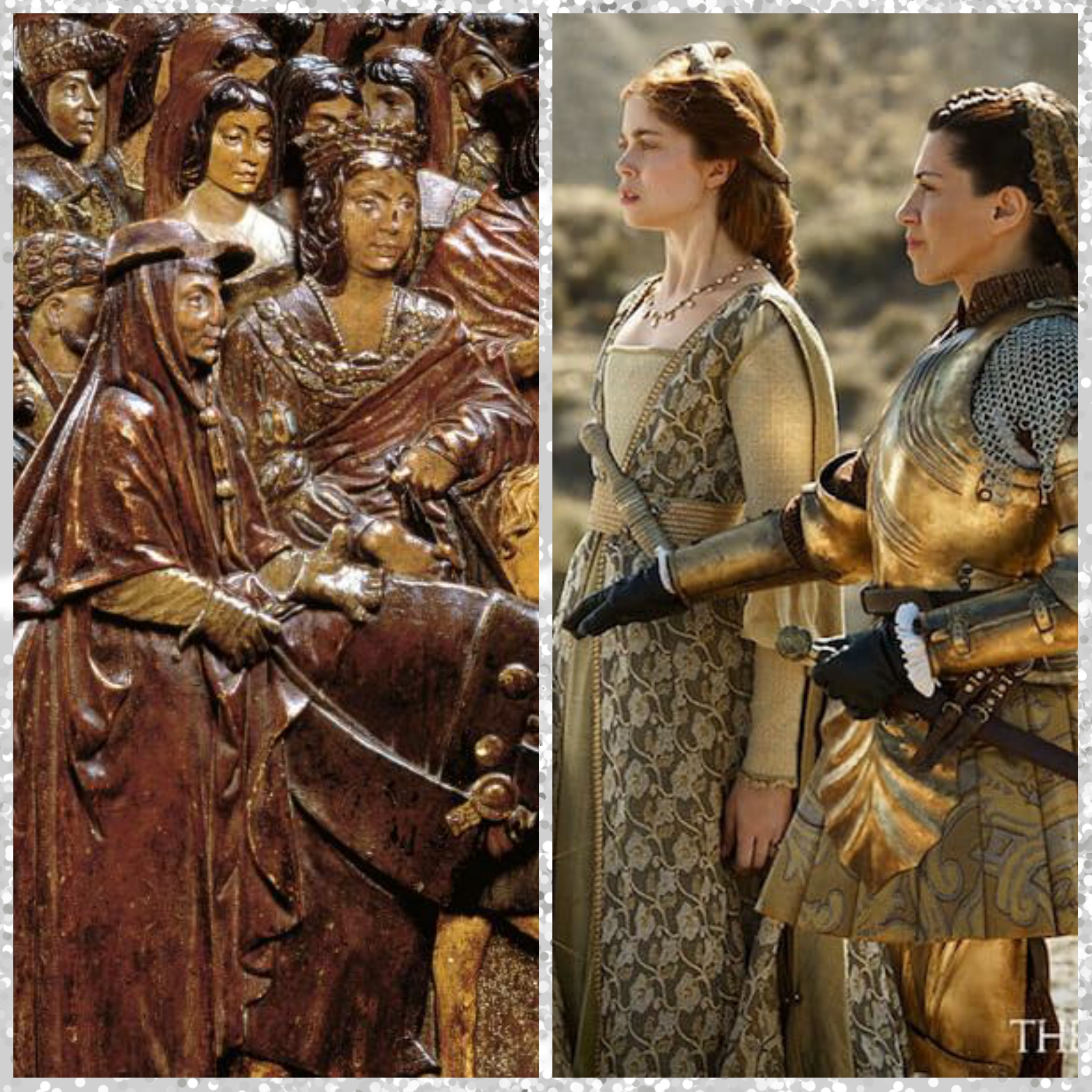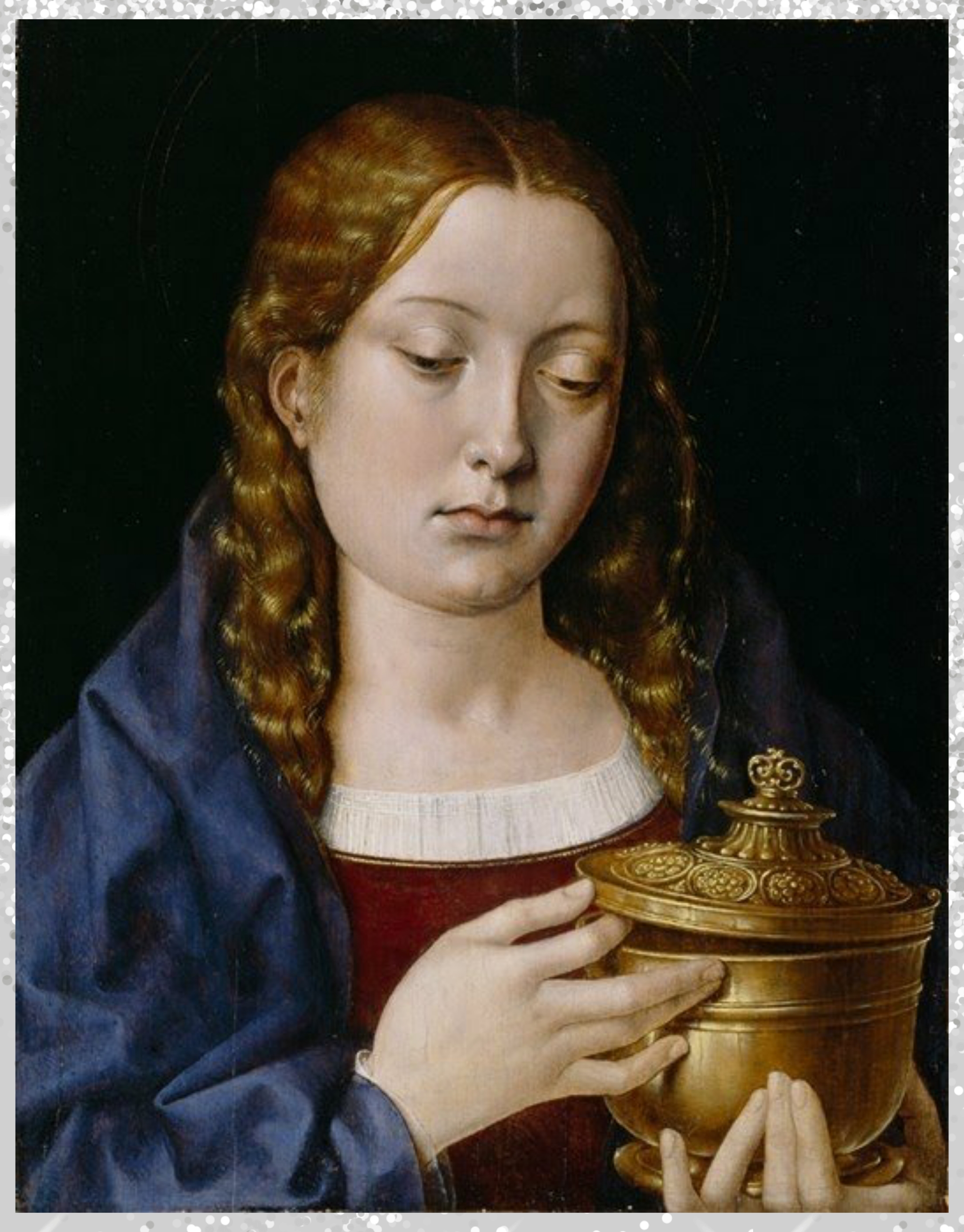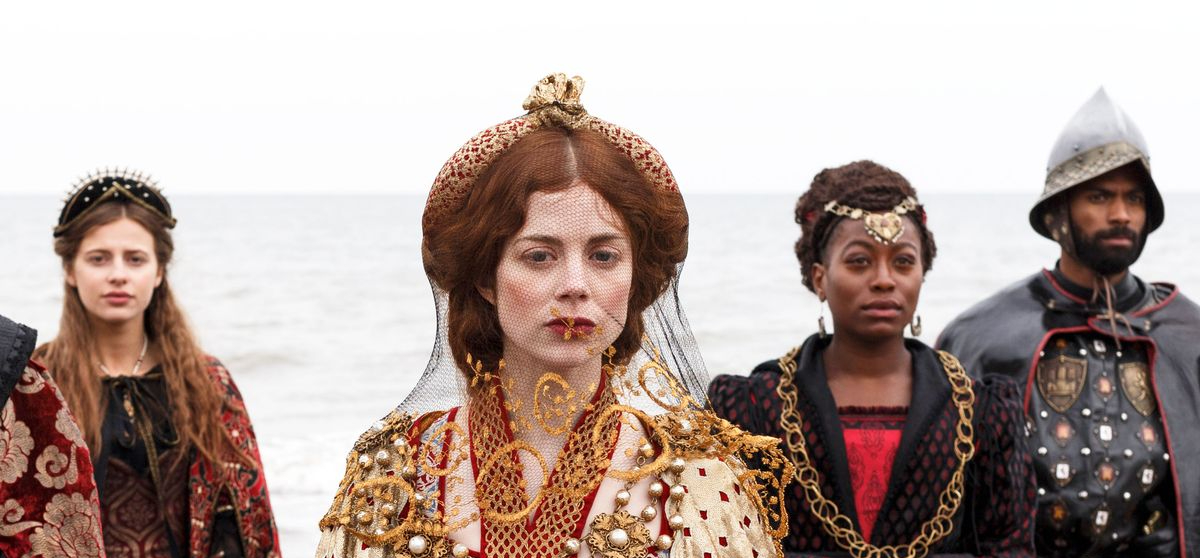By request, I have begun watching The Spanish Princess. The show, by its own admission, takes dramatic licence with history for the sake of creating a dramatic story. I was surprised then to see just how much of the show is rooted in actual history. Characters are aged up (or down) in places, but then Katherine and Arthur were fourteen and fifteen when they married, which hardly makes for palatable television. But, with the exception of dramatic effect, much is inspired by historical events, far more than I expected, actually. And so begins The History of The Spanish Princess…
Was Katherine attacked en route by a Moorish raid, and did Queen Isabella fight them herself?

In the first episode, Katherine is escorted to the ship that will take her to England by her mother, Queen Isabella. Isabella, the warrior queen, wears full armour, and when their group is attacked, it is Isabella who leads the defence. She rides into the fray herself, fighting alongside her men, while Katherine falls to her knees in the background, and prays.
It’s all very dramatic, and you’d be forgiven for thinking the scene has been created for dramatic effect. Queens didn’t typically ride into battle. Queens in armour were rare and at most for decorative purposes. If Katherine’s group was attacked then surely their escort would deal with the attackers, and surely Katherine would be rushed to safety.
Dramatic it may be, but it’s also based on events that did happen.
In history, this particular sequence of events didn’t happen. Katherine wasn’t attacked en route, and her mother didn’t ride to her defence. However, the scene draws from three separate events, and uses them as the inspiration for something that actually isn’t all that unbelievable.
Firstly, Isabella was a warrior queen, in every sense of the word. She wore armour. She fought alongside her men. She proved herself to be a capable quartermaster, and arranged for medical tents to follow the army on campaign to treat the wounded. She didn’t wear armour as a symbol to encourage the men, saying ‘we’re all in this together’. She actually went into battle, she wielded a sword and she killed men.
She’s pretty bad ass.
The second event which we can see incorporated into the scene is called ‘The Queen’s skirmish’. During this skirmish, Isabella was travelling with her daughters (Katherine among them), when they were attacked by a Moorish raiding party. Isabella’s men fought them, while the princesses and their ladies remained on the side-lines, kneeling in prayer for their mother’s victory.
Finally, Katherine’s journey to England was delayed for a number of reasons. Katherine herself fell ill, the weather was appalling and wouldn’t allow for sailing. (Even when they did sail, storms threatened to wreck them). And, there were Moorish raids nearby.
So, while Katherine wasn’t specifically attacked on route to England, and her mother didn’t ride into battle to defend her, these were all things that had already happened. The history behind it is sound.
Did Henry VIII write to Katherine, pretending to be his brother?
In the show, Katherine has been exchanging letters with her husband to be. She reveals that she has already fallen in love with the man behind the letters, and suggests that her responses have been a little on the explicit side. When Katherine brings it up with Arthur, shock horror! He knows nothing of any letters. He never wrote to her, and she’s actually been writing to his younger brother, Henry who wrote to her, pretending to be Arthur.
Gasp! The drama!
Historically, this didn’t happen. Arthur and Katherine began exchanging letters from 1499, after their marriage by proxy. Arthur’s mother, Elizabeth of York, encouraged him to write so that the couple might get to know each other. Elizabeth herself corresponded with Isabella. Arthur was twelve years old when he started writing to Katherine. Katherine was thirteen, and Henry was only eight. So, we can safely say that Henry was not writing Arthur’s letters for him as a prank.
Arthur’s letters were not written by him either. They would have been drafted for him, and he would have copied them out. Katherine’s replies would have been carefully constructed. Letters written between them would have followed certain conventions. Arthur referred to Katherine as his ‘dearest spouse’, there’s a lot of praising of virtues and it ends with the equivalent of ‘say hi to your parents for me.’ They would not have been allowed to let their own sentiments wander into them, even if they had been inclined to write personally. Katherine’s responses would never have bordered on explicit, and it’s doubtful that someone as pious as she was known to be would say, as she did in the show, that she hoped God didn’t read her letters.
It is however, an interesting plot device, and the irony of Arthur saying that his brother, ‘had her before me’, is particularly amusing.
Was Elizabeth of York pregnant at the time of Katherine’s arrival?
Early in the show, Elizabeth of York claims that she cannot make a journey because Arthur’s ‘brother’ (she says while holding her small baby bump) won’t allow it. Katherine arrived in October 1501, but Elizabeth had had her last child (a boy who died within a year) in early 1499. I say last child because evidence suggests that after the boy, Edmund was born, Elizabeth and Henry decided not to have any more children.
By that point, Elizabeth had had six children over a period of thirteen years. When Arthur died (spoiler alert: Arthur dies), Elizabeth comforted her husband by pointing out that they were still young and could have more children if they chose to. Within a month she was pregnant again. But, in answer to the question, no, Elizabeth wasn’t pregnant when Katherine arrived.
Did Henry VII force his way into Katherine’s bedchamber?
In the show, Henry VII is so desperate to see that Katherine is a suitable bride for his son that he travelled to meet her as she travelled to London. After he had arrived at the house she was staying in, he was informed that Katherine would not be seen until her wedding day, upon which Henry hammered on her door and went in anyway.
This did actually happen, though with a small liberty taken with history. Henry did ride down to Dogmersfield House where Katherine was staying. He was told by everyone present that Katherine would remain in seclusion, veiled and unseen by her husband, and the king, until her wedding day, as per Spanish custom. Henry told them all in no uncertain terms what he thought about that. He demanded that she be brought to him, and apparently shouted that if she was not brought to him, he would break into her bedchamber himself if he had to.
He didn’t have to. Katherine was brought to him, veiled for the time being, but Henry had the veil removed, and was left thoroughly satisfied that his son’s bride was as beautiful as it had been claimed.

Were Edward Plantagenet and Perkin Warbeck executed as part of the marriage negotiations?
Before Katherine leaves for England, her parents demand the execution of Edward Plantagenet and Perkin Warbeck. These two men allegedly have a claim to the English throne, and Katherine’s parents wanted to ensure that the House of Tudor was secure before they married into it. This isn’t too far off what actually happened.
Edward Plantagenet was the son of George Plantagenet, Duke of Clarence. The Duke of Clarence had been the brother of Edward V, Richard III, and might have had a reasonable claim to the throne himself had he not been executed for treason. Upon his death, his son Edward became Earl of Warwick, but his position as a claimant had been tarnished by the Act of Attainder against his father. It could, however, be restored quite easily by an Act of Parliament, which is why upon his accession, Henry VII had him placed in the Tower.
Perkin Warbeck’s claim to the throne was far more nebulous. Warbeck claimed to one of the Princes in the Tower, Richard of Shrewsbury. Warbeck was received in courts across Europe (though not Spain) which further bolstered his claim. After failed attempts to take the throne by force, Warbeck confessed to being a pretender and lived at court, under guard. He was moved to the Tower after he attempted escape.
Plantagenet and Warwick were placed in cells beside each other. Together they planned an escape which may have been Henry’s intention all along. There is some debate over whether Edward Plantagenet was knowingly involved in the plot, and some suggestion that he may have been too mentally disabled to know what was happening either way. Regardless of their plan to escape, both gave potential plotters a culprit to replace Henry VII with even if they were unaware of such plots. This, combined with the impending marriage of Arthur and Katherine required the removal of potential threats.
Both were tried for treason, found guilty and executed. Possibly unaware of what it was he was confessing to, Plantagenet confessed and placed himself entirely at the king’s mercy. Due to his rank, Plantagenet’s sentence was commuted to beheading. No such courtesy was extended to Warbeck. The Spanish ambassador, de Pueblo was present at Warbeck’s execution. He was to be hung, drawn and quartered, but he disappointed the gathered crowds when he died at the first hurdle. When they cut him down from the gallows, it was decided that there was little point in cutting him open and cooking his entrails in front of him. They still beheaded him though.
Katherine had no knowledge of these events, but when she learned of them much later, she lamented that her marriage had been made in blood. Even later than that, she blamed the execution of the innocent Plantagenet as the reason for her troubles when Henry began divorce proceedings so he could marry Anne Boleyn.
Next time: Arthur’s death…
If you’d like to join me for more fun and games in picking apart history, and other behind the scene tangents, you can support me via my Patreon.













